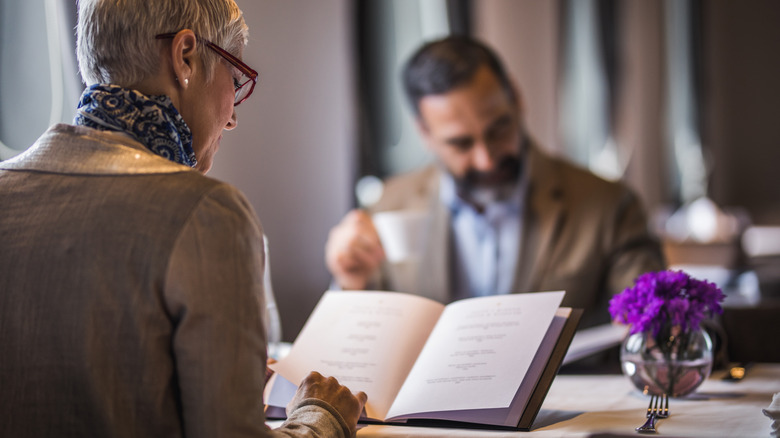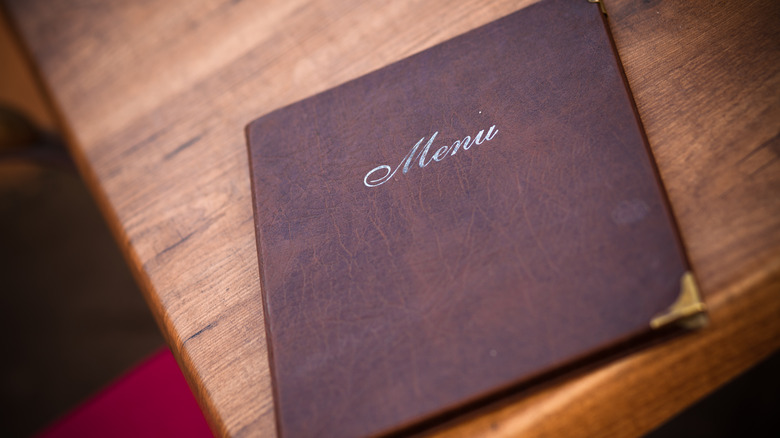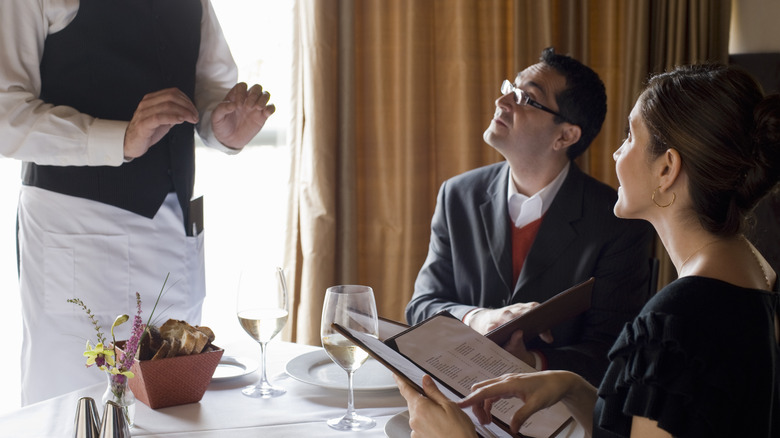The Fine Dining Menu Etiquette You Don't Think About Following
Some rules of formal dining etiquette make perfect sense. For instance, the admonition to wait for one's fellow diners to be served before eating. This is simply common courtesy, after all.
Other accepted rules, however, seem to make little sense in contemporary culture. As a consequence, they're rarely followed. A good example of this is the elbows on the table rule, which apparently originated during medieval times, when tables were often unstable, and so, too, were tempers. The posture was seen as aggressive, in other words, and often led to fights. These reasons are no longer relevant, however, so this rule has largely gone by the wayside, even in fine dining settings.
So too, seemingly, has another etiquette rule regarding the proper handling of menus. Did you know formal dining etiquette dictates that some part of the menu should always remain in contact with the table? It's unlikely that you do, and now that we've helpfully apprised you of this dictum, you'll probably continue to ignore it. That's understandable, of course, although perhaps not appropriate in all situations. This rule, despite its superficial silliness, has legitimate reasons underpinning its use.
Why the 'don't lift the menu' rule exists
"In formal dining, the menu should always be touching the table in one place," Beaumont Etiquette founder Myka Meier explained in Food and Wine. Traditionally, the bottom of the menu is the most appropriate portion kept in contact with the table or charger plate. The reason for this rule appears to be neatness, but it also seems likely that it was added to the etiquette canon so that people wouldn't hold menus directly in front of their faces.
Shielding your eyes from your fellow diners is bad manners, as it contradicts one of the fundamental tenets of common courtesy — being attentive and respectful. Don't ignore your tablemates, even if it's to better make out menu offerings. Keep the menu close to the table, if not in direct contact, in all formal settings.
In less formal settings, however, this is one of those obscure rules that can safely be disregarded. You know, like always sipping from the same place on your water glass or pushing bones or other uneaten food items to the upper left quadrant of your plate. One can't offend common courtesy, after all, when one's fellow diners are blissfully ignoring the same rules.
A commonsense guide to menu etiquette
Strict adherence to etiquette rules isn't always necessary, in other words, but you should be aware of the expectations in certain social situations. If you're in a formal dining or business-related setting, following the accepted rules of etiquette is recommended as your behavior will likely be judged by others.
When it comes to menus and ordering, then, there are a few basic etiquette rules which should properly be observed. When ordering, it's best to follow the example of your host or fellow guests in terms of the number of courses. Don't order the most expensive thing on the menu unless your host explicitly encourages you to do so. Don't raise your voice when ordering, and avoid expansive arm gestures. Be polite at all times.
Cue servers that you are ready to order by closing the menu or setting it aside. Since the menu will only be in your possession for a short time, why not follow formal fine dining etiquette and ensure it remains in contact with the table? It will probably be the first time you've ever followed this rule, but that's okay. Remember, etiquette exists for a reason. If you respect your fellow diners by meeting their expectations for appropriate behavior, this respect will be reciprocated in turn. It's called civilization, people.



